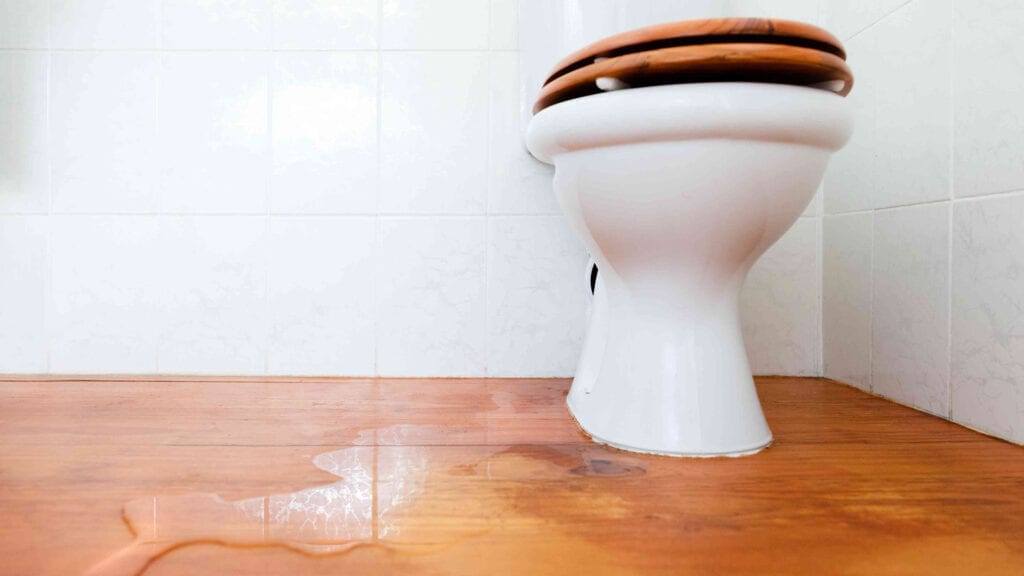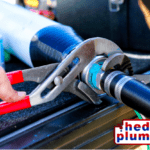Your home toilet is made up of two big components: the bowl that rests on the ground, and the top tank which holds the water that’s released every time you flush the toilet. The bowl is hardly more than a good piece of ceramic drain fixture without the moving parts in any way. With just a few exceptions, there are very few repairs needed for the bowl. You may be amazed to learn that many bathroom problems are rather simple to fix yourself.
Before you can begin repairs, it is important to have a basic understanding of how a toilet tank functions.
The bathroom tank’s basic function is to maintain an amount of water in the tank until you flush the toilet. From there the water in the tank flows through an opening at the base of the tank and then to the bowl, forcing waste from the bowl and to the property’s sewer and drain lines. Two key elements in the tank make it easy: the flush valve, as well as the fill valve (or ballcock).
The bathroom fill valve is the mechanism that matches the tank with water. It’s also referred to as a”ballcock” or even a”refill valve”. The valve is generally found to the left side of this tank. Load valves come in four basic variants:
- Plunger-type ballcock: the earliest kind, usually made from metal
- Diaphragm-type ballcock: older fashions might be metal, newer kinds are plastic
- Float cup match valve: a more recent layout, usually made from vinyl
- Floatless fill valve: another additional layout; not permitted by a few codes
Whatever the style, the valve functions to automatically start the water supply valve once the water level drops in the tank in a flush, then shuts off automatically as soon as the water level rises to a particular level in the tank. Based on the kind of layout, the valve is controlled either with the way of a floating ball along with a float cup that goes up and down with the water level in the tank.
The Ballcock designs, as well as the older styles, are generally known as “ballcocks,” a word that identifies this hollow floating ball that works the valve controlling the water.
Even Though the expression Ballcock is occasionally utilized to refer to any sort of fill valve, technically the word applies only into two different types –the plunger-type as well as also the diaphragm-type–both of which possess the identifying float ball which operates the valve utilizing a very long arm connected to the ball.
Although they are infrequently utilized in new bathrooms, you might encounter either plunger-type and diaphragm-type ballcocks in older bathrooms. The mechanism is quite straightforward, and in which alterations to the water level will be required. This is achieved by bending the float arm down or up to alter the point where the float ball opens off the water source. For example, when a toilet water supply continues to operate following the flush cycle, it’s normally because the water level is high in the tank. By bending the float arm down, the float ball will close the water off in a lower tank degree. Fixing the water level in the tank is an issue of “fine-tuning” the stage where the float ball opens off the valve.
Fixing the Flush Valve
The next important part is in the middle of this tank. The flush valve is a brass or plastic fitting attached to the base opening onto the tank. The flapper or float ball sits against the valve opening and retains water from the tank until the flush handle is engaged. If the handle is depressed, a string or lift cable attached to the handle pole lifts the flapper from the valve seat and allows the water to flush out of the tank and then into the toilet bowl.
Newer-style bathrooms vary considerably in design and flushing mechanism. Before you start work on your bathroom you need to look for the make, model, and parts listing.
Integrated with the Flush Valve is a perpendicular escape tube that extends upward into the tank at the bottom of the valve. This part of the overflow tube is to prevent water overflowing from inside the tank and to permit a little bit of water to flow, in the toilet bowl while the tank is refilling. A little refill tube put into the cover of the overflow tube makes it possible for a little bit of water to flow into the bowl throughout the refill.
Making some bathroom repairs can be fairly simple and straightforward. All refill valves have east wats of fixing the water level, and flapper valves are simple to replace or fix.
Another very straightforward fix typically takes one of two options:
- Reconnect the elevator cable or lift string that connects the elevator arm in the flapper.
- Fix the mounting nut within the tank; its reverse threads need counterclockwise spinning to tighten.
Fixing Leaks in the Toilet Base
While most bathroom problems arise in the tank, there is one that includes the foundation of the bathroom: water leaking out around the bottom of the toilet bowl, and the ground.
A real puddle of water at the bottom of the bathroom signals an big issue. There’s a good possibility this water is filthy, to keep the issue from worsening, it is ideal to refrain from using your bathroom until it is fixed.
Normally this issue is caused due to issues with the wax ring which seals the bottom of the toilet into the drain opening into the ground. Though this may look to be a significant project, it is not that hard. You can save yourself a great deal of cash by doing the job yourself instead of calling the plumber.
A clogged toilet is most likely among the most frequent bathroom problems you will encounter, but generally, there’s absolutely no reason to call a plumber. A bathroom plunger having an inner cup or flange will help clear stubborn clogs might normally require a drain snake.




